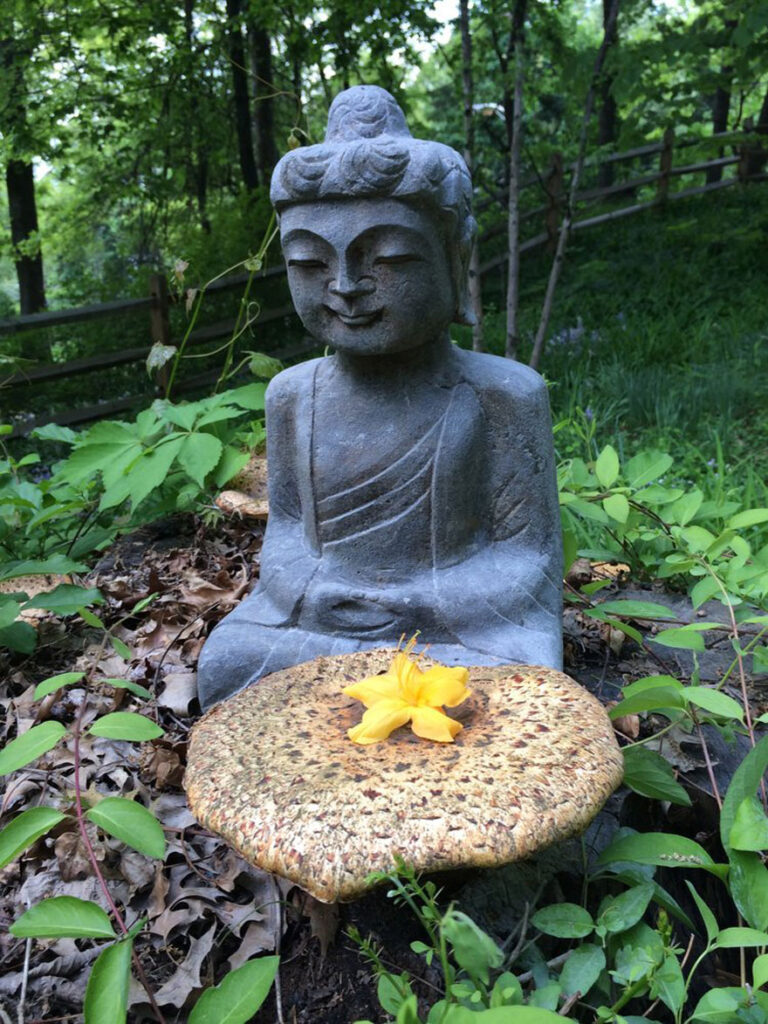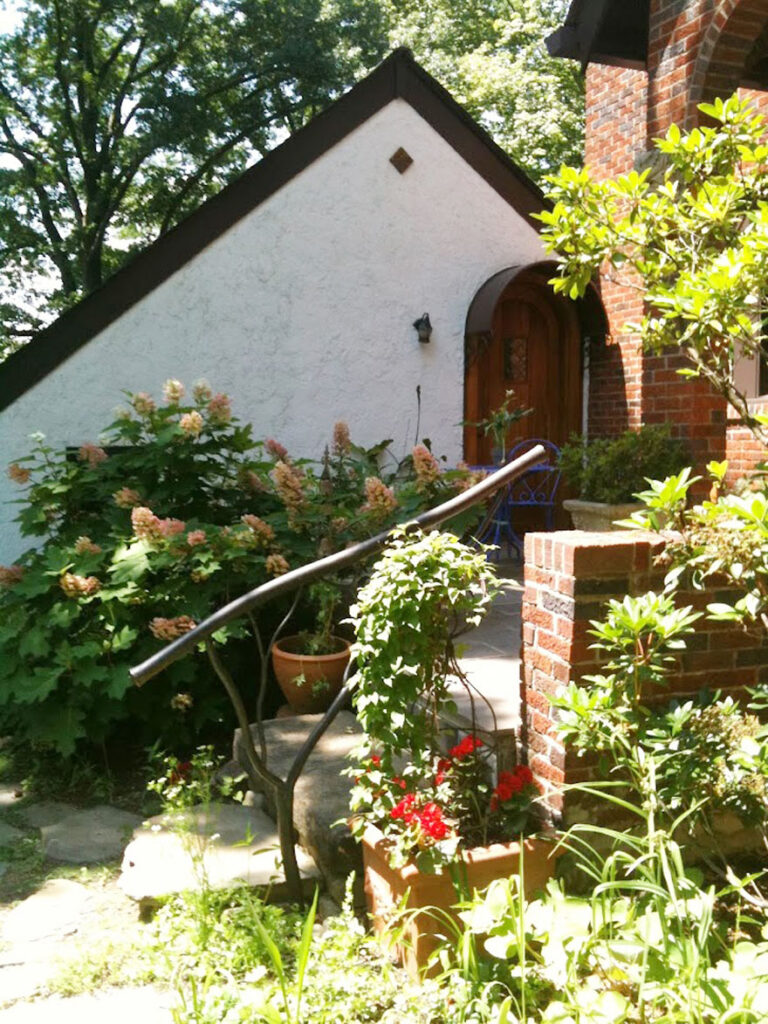
Refuge on the edge of the woods
“I’m not very garden proud. You’ll see when you come what I mean,” Stephanie Ulmer warns. “My garden is very messy. It’s yearlong messy, even when at the height of most obvious beauty. I love my garden.”
A large –and beautifully messy– residence on Elmer Street rests in the outskirts of Edgewood, on one of the highest points of Allegheny county. In the 1930’s, a man named Elmer built a house on the edge of the woods. In 2003 Stephanie Ulmer and her husband Klaus moved in to a Tudor style house. “
Ulmer from Elmer Street in the house built by Elmer. It was meant to be,” Stephanie laughs.
When Stephanie and her husband moved in, the backyard, like neighbors yards, was filled with Norway maples. It was not an easy decision to cut down the trees, but they did it anyhow and planted a handful of trees to replace the cut invasive ones. Once the invasive Norway maples were gone the native saplings that were there really took off and the whole yard became naturally more diverse. Now dogwoods, sugar maples, red buds, native laurels, oaks, elms, hickory trees, wild cherry, locust, catalpa, cucumber magnolia –some planted by the previous owner, some appearing as volunteers– grow side by side on the hilly piece of land.
“If we remove the worst of the invasives, nature will just do its miraculous thing all by itself.”
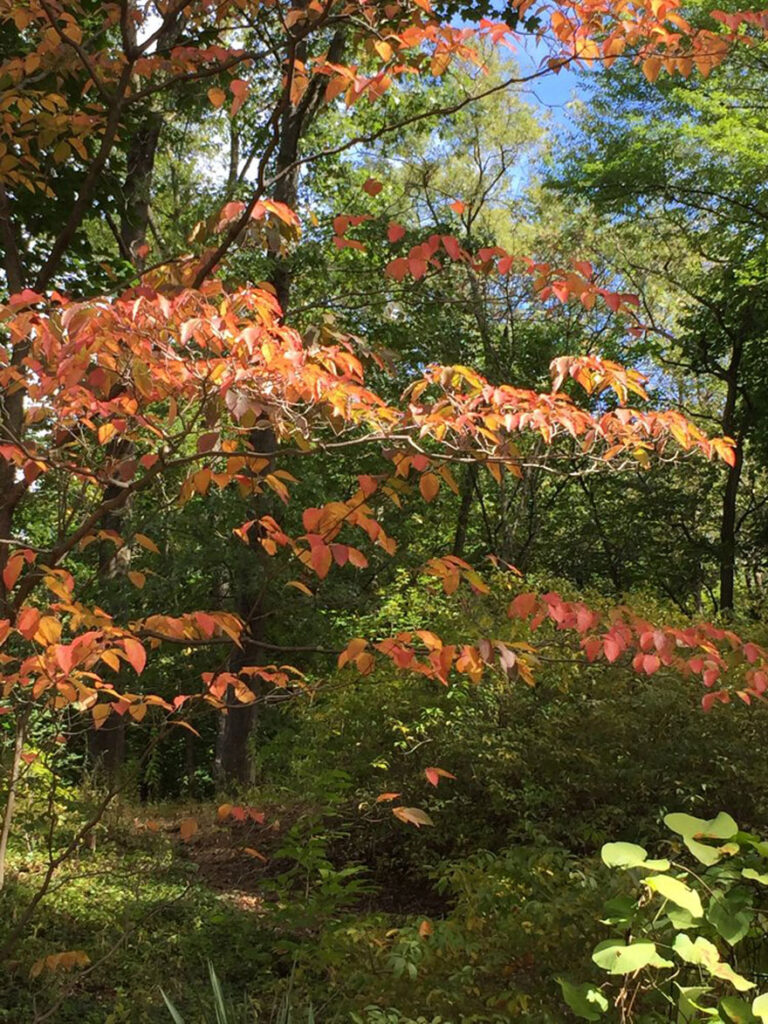
Relationship with a garden
On a warm February day, Stephanie walks down the steps to greet me and take me for a garden tour.! Sanjuro, Stephanie’s 13 year old dog follows her, limping yet not allowing sore hips to prevent him from enjoying the moment. We both note, delighted, that the warm morning feels like the first day of spring, and in the same breath recognize our ambivalence: Oddly warm days are a sign of climate crisis and the detrimental impact of us humans on our world.
Stephanie is used to taking care. She took care of people as a shiatsu therapist for over 30 years. She now takes care of the environment and is a regular face in the climate movement. Her yard is probably a part of her environmental activism, I wonder.
“Of course, how could it not be part of my environmental advocacy? I feel like gardens are like any other relationship we have – full of compromises.! The garden, which includes the fauna and fungi as well as flora, has its own needs, I have mine and both those needs are constantly changing.! So I think of gardening as more of a conversation or dance.! In that sense the garden is a cooperative effort or co-creation.”
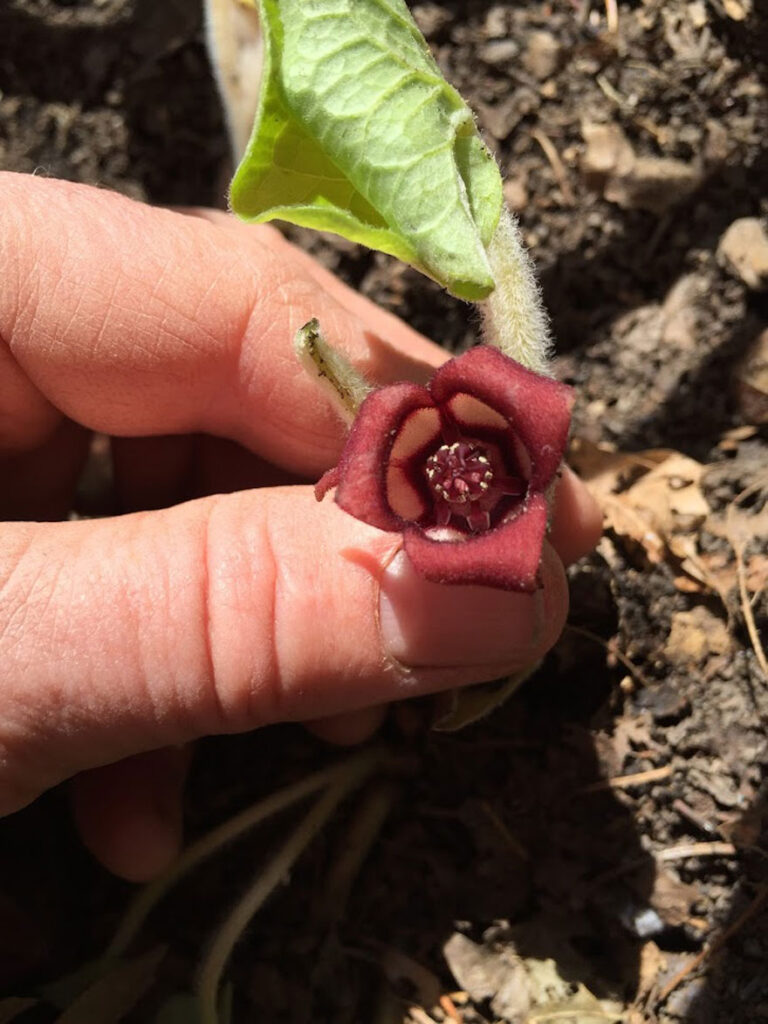
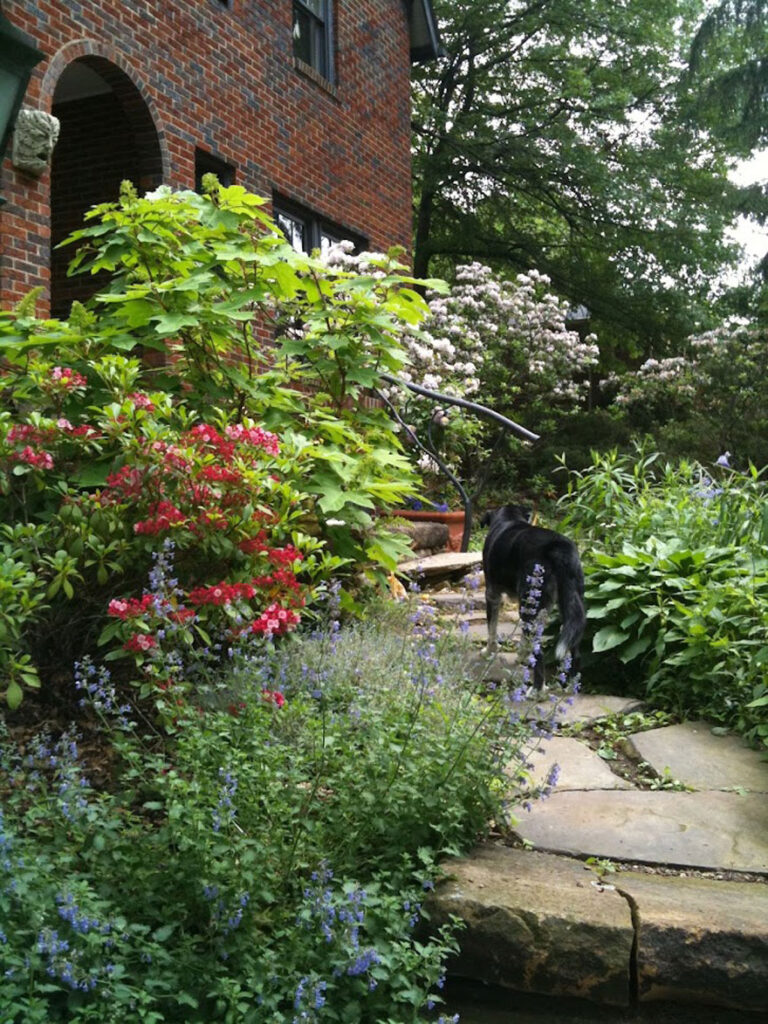
Finding one’s gardening path
Stephanie’s gardening has been a journey, not a fixed and un-changable habit. Initially she started gardening choosing plants that were pretty. Michael Dirr’s gardening book helped her understand what plants needed to thrive. She then started learning about something that her gardening bible did not mention: The importance of planting native plants and the risks related to planting non-native plants, and non-native plants becoming invasive.
As she continued learning more, she again came to recognize that life is complex and nuanced: Some experts pointed out that any nonnative plant or animal, even so-called “well-behaved” ones, can become perniciously invasive under the right circumstances. Others note that rapidly changing temperatures combined with climate weirding may decimate our current populations of natives. This group of scientists encourage the planting of native plants from slightly warmer climates than our own and combining them with a small number of select nonnatives.
“There was a lot of information coming from both sides. I planted one thing and and then ripped it up.”
Stephanie had become friends with two landscape architects who were familiar with sustainable landscaping. Listening to them and to her own nature, she found her gardening path:
“I thought I would take a middle of the way approach to natives. My nature is the middle way.”
Now her large suburban property is filled mainly with native plants and some non-natives maybe to 40 – 60 ratio. She aspires to the ratio of 70 natives to 30 nonnatives.
“Each year I discover yet another plant is a nonnative. In fact, it wasn’t until joining Wild Ones that I learned, after planting them widely in my yard, that evergreen azalea was not a native!”
Stephanie joined the Wild Ones Western Pennsylvania chapter in the fall of 2021, shortly after its launch. She had been troubled by large lawns –“green deserts”– for years and was happy to find a group that shared her vision of another world.
“If we wish to survive as a species with some semblance of civilization intact, we will need to change our relationship with nature, of which we are of course a part, from an extractive one to a cooperative one. This will in turn change every aspect of how we live. I personally think this will be a change for the better, one that will make us all happier and healthier.”
“Allowing nature to play a larger role in our lawns, by letting our native flora flourish, letting the leaves lie where they are at least during winter, dispensing with petroleum based fertilizers and chemical herbicides and pesticides and switching to manual or at least electrical powered mowers and clippers is a beautiful example of a change that will make our lives both easier and more joyful.”

Humanity living alongside nature in Edgewood
A week after our meeting, the Intergovernmental Panel on Climate Change IPCC released their latest report on the impacts, adaptation and vulnerability related to global heating. The report states bluntly that people and other animals are already dying in heatwaves, storms and other disasters fuelled by global warming and calls for a wholesale revision in how humanity lives alongside nature. The report urges us to conserve 30 to 50 percent of the Earth’s land, freshwater and ocean areas.
Stephanie’s attempts to create change in her own neighborhood have been met with a range of responses.
“I can’t say how many people stop to tell that they love my yard,” Stephanie says.
Then there are those who likely feel offended by the messiness of her garden yet tolerate it realizing that most people appreciate the wild yard.
There was also a neighbor, now deceased, who hated the garden to the extent that he sprayed Stephanie’s milkweeds with Roundup. The hemlock tree between the properties is not doing well likely because of the repeated poisoning. The neighbor also called the borough several times to report a code violation. The borough would call Stephanie back: Your milkweed, asters, and ironweed are right next to the street.
“The plants were not pretty in typical suburban sense,” Stephanie sighs. “I wrote them back that I am working with landscape architects. They never pressed charges.”
The third time this happened, Stephanie called the borough manager and found out that the problem was gone: The borough had changed their code.
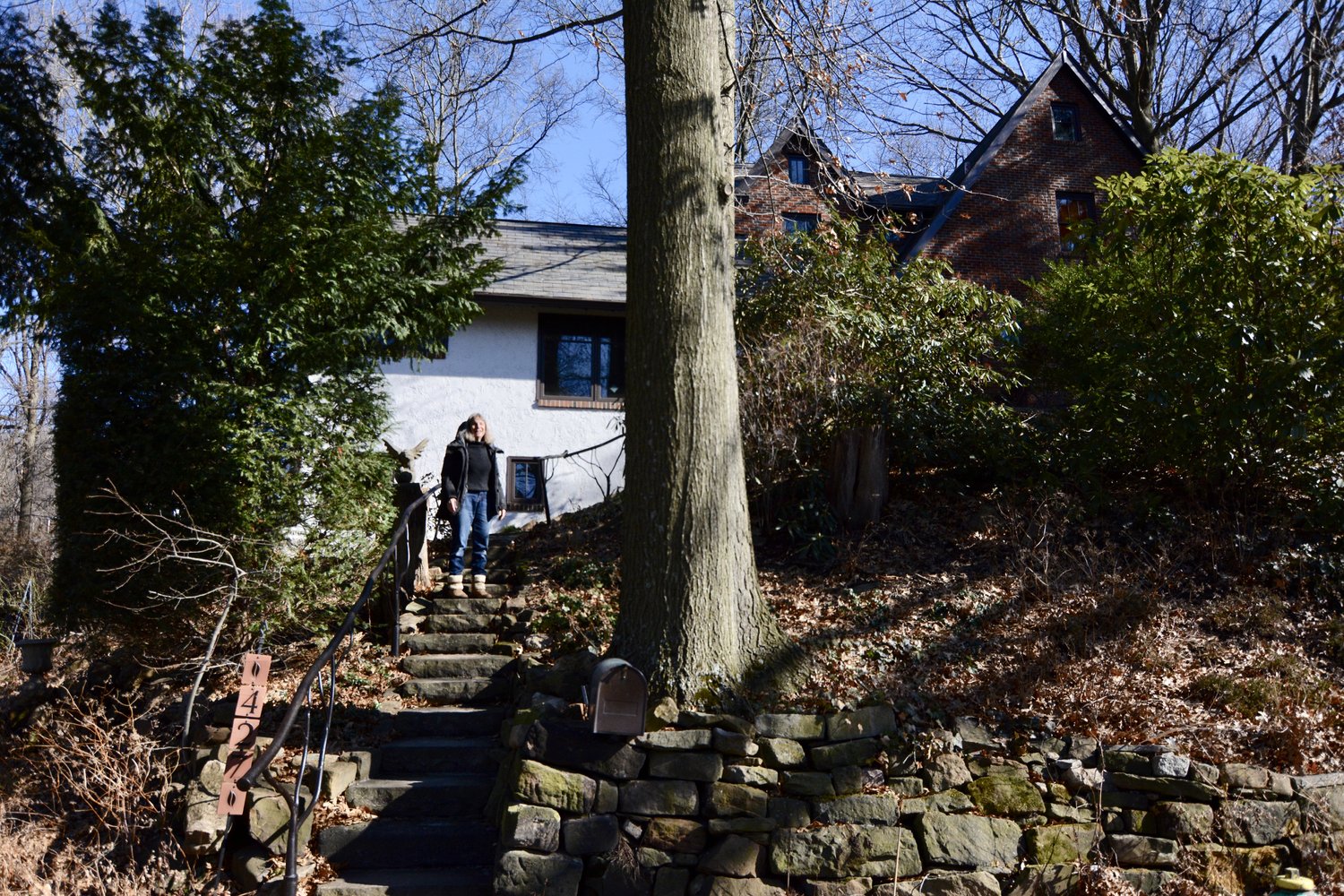
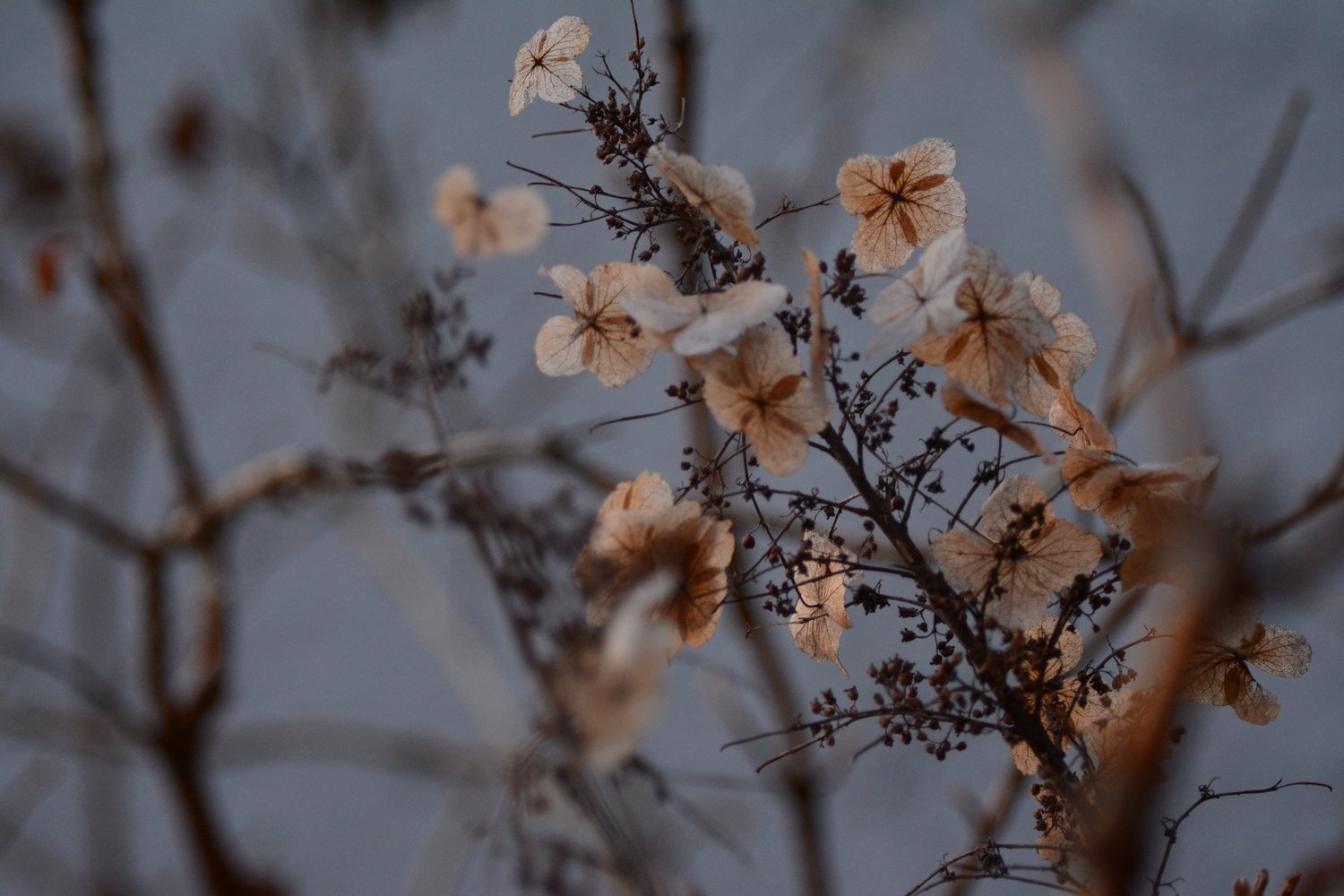
Gardening for balance
A few days after our tour of Stephanie’s garden, the war started in Ukraine. The yard and gardening is Stephanie’s refuge, a place where she finds relief for herself, and for others.
Stephanie points out to a snag: “Squirrels have a luxury two-floor condominium in the tree. They often sit on their shelf mushroom terrace and enjoy a meal from a nearby oak.”
Homeowners typically remove dead trees but Stephanie and Klaus decided to leave the snags standing after ensuring that none of them were tall enough to damage any structures when they met their natural end. Snags are much sought after by wildlife for a variety of purposes.
The two pawpaws Stephanie planted about 10 years ago have multiplied manyfold. There are now closer to ten pawpaw trees in the yard.
Stephanie bends down to check on a woodland phlox, or what’s left of the plant. Because of the unusually warm fall we had last year, bunnies had babies in the late fall. They ate what came their way, like the phlox. Yet, Stephanie seems undisturbed by the damage.
“The best case scenario is that we can slow down the impacts of climate change. I want my garden to be a refuge for what ever form of native life, whether worm, butterfly or fox that wants a place to shelter. My door is open for them.”
Close to a “Pollinator friendly” sign and a bird bath, nested in the middle of a mock orange, there’s a mourning dove, staring directly at us, as if confirming Stephanie’s gardening principles of care.
Text © 2022 Kirsi Jansa. Photos © Stephanie Ulmer and Kirsi Jansa.
Original story published by Kirsi Jansa
https://kirsijansa.com/stories/refuge-on-the-edge-of-the-woods
